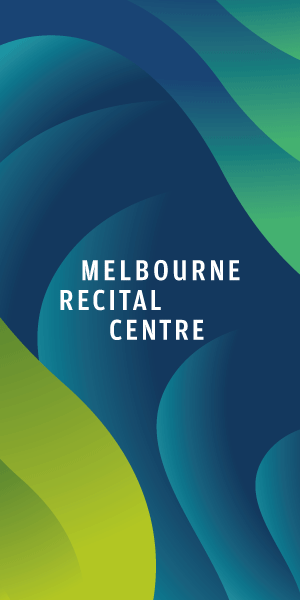St James Old Cathedral – a link with Melbourne’s past
By Dr Cheryl Griffin - Royal Historical Society of Victoria
There are so many reasons why you should visit St James Old Cathedral, located on the corner of King and Batman streets, just across the road from Flagstaff Gardens.
The oldest church in Melbourne, it is the only surviving work of colonial architect Robert Russell who had been employed in Melbourne’s earliest days as a surveyor. And it is one of the few surviving buildings in the CBD to predate the Gold Rush, which began in 1851.
Known as the “Church of the Pioneers”, it was originally built on the corner of William and Little Collins streets on a five-acre Crown Grant site where a simple wooden church had preceded it. The foundation stone was laid in November 1839 by Superintendant Charles Joseph La Trobe and it opened in October 1842, five years before it was finished. The cathedral was consecrated in 1853, by which time it was found to be too small for its purpose. The influx of migrants lured to the colony by the hope of finding gold meant that Melbourne was changing beyond recognition and at a far faster rate than anyone could have anticipated when St James was built.
St James was replaced as Melbourne’s Anglican Cathedral by St Paul’s, built in 1891 on the corner of Flinders and Swanston streets, around the time that the former’s congregation was diminishing. This, coupled with the high cost of maintaining an aging and deteriorating building on a site that was increasingly valuable, pointed the way for its demolition. “Historic Church Doomed” cried the headlines.
In mid-1913, the building was condemned, and services ceased. Remarkably, St James survived. Despite its detractors (one Melburnian dubbed it a “pile of ugliness” and another “about as ugly a specimen of ecclesiastical architecture as could be imagined”), it was saved after a campaign by a number of pioneer families for whom it had been a place of worship, and a place where family members had married, were baptised and where burial services took place for more than 70 years.
In early October 1914, The Herald newspaper reported on one last ceremony at the old site. Even as the building was being demolished, a final wedding – “Love Among the Ruins” took place, the reporter commenting that “it is doubtful whether lovers were ever before made man and wife in such strange circumstances”.
By November there was nothing left on the site but the tower and a fragment of the staircase by which Governor La Trobe had reached his private box. Now dismantled, the Old Cathedral was moved piece by numbered piece to its present site on the north-west corner of King St where it was meticulously reassembled with relatively few alterations to its design. It reopened for worship in April 1914.
The image you see here is part of a photographic collection bequeathed to the Royal Historical Society of Victoria (RHSV) by philanthropist, art collector and photographer Everard Studley Miller. It was taken after the Old Cathedral’s removal to King St and Russell’s simple design is evident. It is built of stone in the Colonial Georgian style, with bluestone footings that remind us of the rich bluestone architectural heritage of the era that predates “Marvellous Melbourne” (that is, before the 1880s).
It has a distinctive octagonal bell tower atop two square bell towers. The domed tower, designed by architect Charles Laing, who had replaced Robert Russell, was known as “Palmer’s Pepperbox” after Dr Palmer of the Church Building Committee who had insisted on the domed design.
In the RHSV’s publication Remembering Melbourne, Andrew J. May writes that, “its bells rang out through the 19th century on special occasions, including the Queen’s Birthday, Separation Day, Christmas and New Year’s Eve, lending a sacred air to this precinct of businessmen and bankers.” The church history adds that Melbourne’s first peal of bells (six bells) was hung in 1853, replacing an old ship’s bell, and two more bells were added in 1885. The story goes that a group of miners banking their profits from the goldfields saw the bells being hung and resolved to stay in town to form a team of ringers. RHSV has in its collection a number of images of the Old Cathedral, including one of six bells on the ground outside the few remaining walls of the church (by then a parish church, not a cathedral), awaiting removal to King St. These massive bells remind us of Melbourne’s growing status during the lifetime of St James and when they ring out across the western part of the CBD, they remind us of this church’s place in our history and its continuing place in our cultural life.
St James has a beautiful and unusual interior, with many features of historical and architectural interest, including original high-backed cedar box pews and their doors, Vice-Regal boxes for the use of the governor and the chief justice, a christening font containing a bowl presented to Charles La Trobe by Queen Victoria, and five stained glass windows designed by Christian Waller, the wife of artist Napier Waller.
St James Old Cathedral is still open as a place of worship that represents almost the entire history of white settlement in Melbourne. However, the journalist who wrote in 1914 that the Old Cathedral has “seen whatever history Melbourne has known” was wrong. Whether in Little Collins St or King St, the cathedral has always stood on the unceded lands of its traditional owners, the Wurundjeri people of the Kulin nation, a fact acknowledged by today’s church on its website: “We pay them a symbolic annual tribute to express our intention to continue to seek understanding and reconciliation” •

City of Melbourne unveils next urban forest plan for the CBD








 Download the Latest Edition
Download the Latest Edition